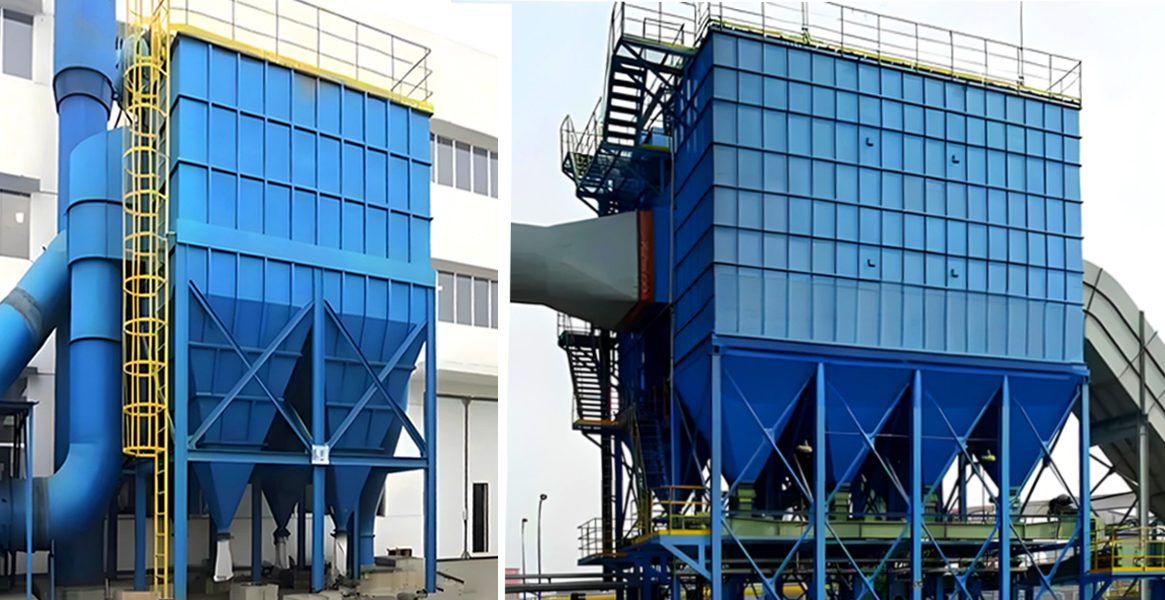In industrial production, the boiler bag dust collector plays a crucial role in reducing dust emissions and protecting the environment. Recently, we conducted a comprehensive inspection and analysis of a specific dust collector’s operation. We found several issues that affected the equipment’s efficiency and hindered environmental protection goals. This article will analyze the operational problems of the boiler bag dust collector and their causes. We will also propose corresponding corrective measures to enhance the equipment’s performance and ensure efficient and stable operation.
1. Critical Baghouse Operational Challenges
Industrial boiler bag filters are essential for:
Meeting EPA emissions standards (<30mg/m³ particulate)
Reducing unplanned downtime
Improving energy efficiency by optimizing pressure drop
Industry studies show: Over 80% of baghouses experience preventable operational issues
2. Top 4 Baghouse Failures & Engineering Solutions
2.1 Excessive Dust Emissions (Exceeding 50mg/m³)
Root Cause Analysis
| Symptom | Technical Cause | Solution |
|---|---|---|
| Dust penetration | Air velocity >1m/min | Install pleated filter bags @ 0.8m/min |
| Bag leaks | Nozzle misalignment | Laser-aligned pulse jet system |
| System leaks | Warped tube sheet | CNC-machined (±0.5mm) replacement |
| Overloading | Changed fuel specs | Increase filtration area by 65% |
Documented Results: Cement plant achieved 68% emission reduction
2.2 High Pressure Drop (1500Pa vs 1300Pa Design)
Key Upgrades:
Expand settling space from 380mm→1000mm
Upgrade pulse cleaning system:
Larger diameter supply pipes
Stable pressure maintenance
Install anti-caking filter bags
3. Performance Upgrade Solutions
3.1 Pleated Filter Bag Retrofit
160×6000mm pleated bags (5.5m² each)
7,260m² total area (vs 4,400m² original)
0.8m/min air-to-cloth ratio @ 350,000m³/h
Technical Advantage: PTFE membrane bags extend service life significantly
3.2 Precision Engineered Components
CNC-machined tube sheets (±0.3mm tolerance)
Stainless steel cages
Automated pressure monitoring

4. Performance Guarantee
We ensure post-retrofit:
✅ Emissions compliance ≤30mg/m³
✅ Optimized pressure drop ≤1200Pa
✅ Extended filter life
5. Maintenance Best Practices
5.1 Critical Parameters
| Parameter | Target | Tool |
|---|---|---|
| Tube sheet leaks | <2% | Infrared camera |
| Pulse pressure | Optimal range | Digital gauge |
| Bag tension | Proper tension | Spring scale |
5.2 Pre-Coating Procedure
Apply recommended pre-coat material
Gradual system ramp-up
Pressure stability verification
Conclusion
Through the in-depth analysis of the operational issues of the boiler bag dust collector and the implementation of corrective measures, we aim to significantly enhance the equipment’s performance and stability. This will not only meet production needs but also reduce environmental impact, ensuring sustainable development for the enterprise. We will continue to monitor the equipment’s operational status, conducting regular inspections and maintenance to ensure compliance with environmental standards and support green production.
For further information or to discuss how we can assist you, please contact us. We look forward to collaborating with you to achieve effective solutions for your dust collection needs.

